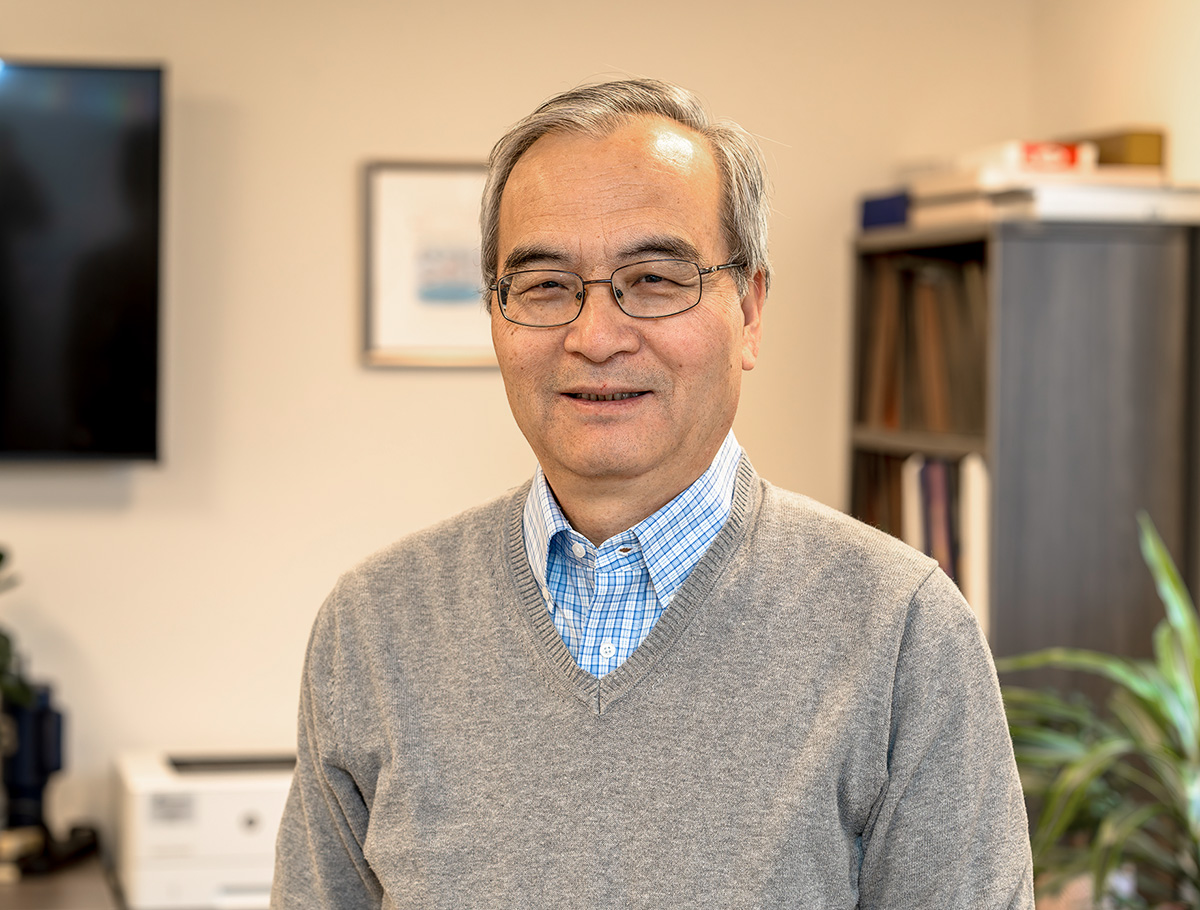
M.S., Peking Union Medical College and Chinese Academy of Medical Sciences, Beijing, China, 1988
M.D. Lanzhou University College of Medicine, Lanzhou, China, 1985
Postdoctoral Fellow, Fox Chase Cancer Center, Philadelphia, PA, U.S.A., 1994
Appointment: W. Thomas London Professor, President, Chief Scientific Officer
The Guo laboratory research is mainly focused on investigating the molecular mechanism of HBV replication and pathogenesis and discovering antiviral and immune modulating agents for the cure of chronic hepatitis B. It also has a long-term research effort toward understanding how interferons control virus infection and how viruses evade innate antiviral immune responses to colonize their hosts.
View Dr. Guo’s publications on National Library of Medicine.
Chronic hepatitis B virus (HBV) infection affects 296 million people worldwide. Although the current standard-of-care medications are efficacious in suppressing HBV replication, reducing viral load and improving clinical manifestations, they rarely induce a sustained, off-drug control of HBV replication, HBsAg loss or seroconversion (a functional cure). The reasons are those medications fail to eliminate the most stable HBV replication intermediate, i.e., the covalently closed circular DNA (cccDNA), in the nuclei of infected hepatocytes and restore a functional antiviral immune response to resolve HBV infection. Accordingly, the primary goals of our HBV virology research are to understand the molecular mechanism underlying cccDNA biosynthesis and functional regulation as well as innate and adaptive immune control of HBV infection. In addition, the molecular mechanisms of nucleocapsid assembly and disassembly, virion and subviral particle morphogenesis are also under investigation.
Discovery and development of antiviral and host innate immunity modulating agents<
As an extension of our basic research projects on HBV replication and pathogenesis, we also developed cell-based assays suitable for high throughput screening of antiviral agents and innate immunity agonists to treat chronic HBV infection. Specifically, our antiviral agent discovery and development efforts focus on the discovery of small molecule inhibitors of HBV replication, particularly to target the capsid assembly/disassembly, cccDNA formation and functional regulation, subviral particle morphogenesis and HBeAg biogenesis. Multiple chemotypes of HBV capsid assembly modulators have been discovered and one of them had been advanced to clinical trial. We also discovered human STING agonists, which are currently in preclinical development for the treatment of chronic hepatitis B. In addition, in collaboration with pharmaceutical companies, we are also developing mRNA and gene editing-based therapeutics for the cure of chronic hepatitis B and liver cancer.
Innate antiviral immunity
Interferons (IFN) are the primary mediators of host innate and adaptive antiviral immune responses. Taking a forward genetic approach, our laboratory identified interferon stimulated genes (ISGs) that suppress the infection of HBV, HCV, flaviviruses and human coronaviruses during the last two decades. We are now particularly interested in understanding the antiviral mechanism of four membrane-associated ISGs, viperin, tetherin, IFITMs and LY6E. While viperin inhibits RNA replication of HCV and flaviviruses, tetherin, IFITMs and LY6E inhibit a broad-spectrum of viruses by disrupting their egress from infected cells and entry into their host cells, respectively. Intriguingly, we also found that at least one virus, human coronavirus OC43 (HCoV-OC43), can use IFITM proteins to facilitate its entry into host cells, most likely by promoting the fusion between viral envelope and endosomal membranes. Further genetic and biochemical studies are currently under way to investigate the mechanisms by which those antiviral ISGs modulate virus infection.